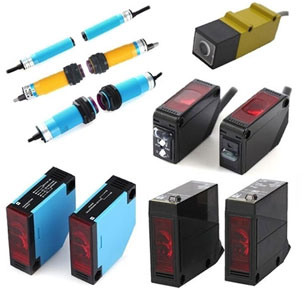Photoelectric Sensor Working Principle
Photoelectric sensor is a general term for sensors that use light to detect objects. It is a device that emits light signals from the emitting part of the sensor and is reflected, blocked and absorbed by the detected object, and then detected by the receiving part and converted into corresponding electrical signals to achieve control. The photoelectric sensor consists of three parts, including transmitter, receiver and detection circuit. So how does a photoelectric sensor work?
Photoelectric sensor working principle

Photoelectric sensors are controlled by converting changes in light intensity into changes in electrical signals. The transmitter is aimed at the target and emits a light beam. The emitted light beam generally comes from semiconductor light sources, light emitting diodes (LEDs), laser diodes and infrared emitting diodes. The beam is fired uninterrupted, or the pulse width is changed. The receiver is composed of photodiode, phototransistor and photocell. In front of the receiver, optical elements such as lenses and apertures are installed. Behind it is the detection circuit, which filters out the valid signal and applies it.
In addition, there are emission plates and optical fibers in the structural elements of the photoelectric switch. The triangular reflector is a solid transmitting device. It is composed of small triangular pyramid reflective materials, which can make the beam return from the reflective plate accurately, which has practical significance. It can change the emission angle in the range of 0° to 25° with the optical axis, so that the beam is almost from an emission line, after reflection, or return from this reflection line.
 Photoelectric sensor features
Photoelectric sensor features
- Non-contact detection, the photoelectric sensor has a long service life and no damage to the detected object.
- It is used for long-distance detection and has a wide range of uses.
- There are many types of objects to be inspected, and objects that have an impact on light transmission can be used.
- High response frequency, suitable for high-speed pipeline inspection.
- High detection accuracy, can be used for different color resolution.

